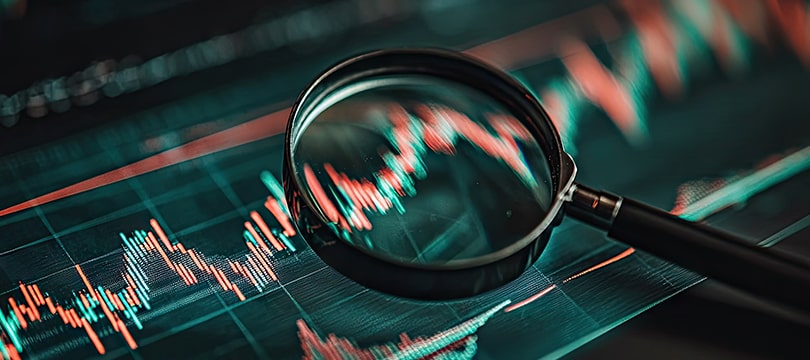In the forex market, there are numerous dynamics that can escape the control of retail traders, especially when large players are involved who move the market in ways that are not always transparent. One of these dynamics is the liquidity hunting of institutional traders.
We discuss it here. We will describe the phenomenon, explain how to recognize it, and illustrate the best defense techniques.
What is Liquidity Hunting?
Liquidity hunting, as the name suggests, is a strategy mainly implemented by institutional traders, i.e., those financial operators who manage extremely high volumes.
These include investment banks, hedge funds, prop trading desks, pension funds, and companies that operate high-frequency trading algorithms.
These entities, due to the nature of their operations, require liquidity to enter or exit the market without causing excessive price slippage.
The forex market is largely composed of retail traders who operate on a technical basis. Many of them place stop losses just above previous highs or below previous lows.
This behavior, repeated systemically, creates zones of concentration of pending orders that become attractive to large players.
Liquidity hunting consists precisely of pushing the price towards these areas, activating those orders (which are sources of liquidity), and taking advantage of that push to enter their own trades at favorable conditions.
After "raiding" the liquidity, the price often reverses, leaving retail traders with losses due to fake breakouts or deceptive movements.
In short, liquidity hunting is not exactly a market manipulation technique, but it is very harmful to the average trader: it misleads them and pushes them to take ineffective actions. Therefore, it must be recognized and... fought against.
How to Recognize Liquidity Hunting
For a non-institutional trader, recognizing a liquidity hunting operation in real-time is not always easy. However, there are some recurring signals that can help correctly interpret what is happening on the chart. Here are the main ones.
- Sudden and rapid breakouts followed by reversals. One of the most evident signs of liquidity hunting is a very fast breakout followed by a rapid return below (or above) the key level. In other words, the price exceeds a high/low, but instead of continuing, it quickly reverses. This behavior indicates that the breakout was not genuine but only aimed at triggering pending orders.
- High volumes at static levels. Even if traditional forex volumes are not always directly visible, some brokers and platforms offer data based on tick volume or the order book. When volume spikes are observed near evident technical levels, it is likely that those levels are the subject of institutional attention.
- Recurring patterns near round numbers. Round numbers (such as 1.2000 or 1.1000 on EUR/USD) are often areas where many retail traders concentrate their orders. If you notice that the price breaks these thresholds by a few pips and then re-enters the previous zone, you can hypothesize an artificial origin of the phenomenon.
- Frequency of false breakouts at certain times. Liquidity hunting is particularly active during market openings (London, New York) or during the release of macroeconomic data. At those times, the natural increase in volatility is often exploited to hit the most exposed levels.
How to Defend Yourself
Knowing the problem is only the first step. It is also necessary to adopt intelligent defensive strategies to avoid falling into the traps of liquidity hunting. Below are four operational techniques that can help you protect your capital.
Avoid placing stop losses at obvious levels
Many traders place their stop losses just above recent highs or below recent lows, or at the most visible static levels. However, this is precisely where most of the liquidity hunting is concentrated. A more prudent approach involves:
-
Positioning the stop loss at an unpredictable distance;
-
Considering the use of dynamic stops based on current volatility;
-
Using tools like the Average True Range (ATR) to define less exposed protection areas.
Use multi-timeframe confirmations before entering the market
Often, those who fall victim to liquidity hunting have entered the market after a signal that was too weak or on an isolated timeframe. The use of signal convergence between different timeframes (for example, H1 and H4) can help avoid false breakouts. If a breakout on M15 is not also confirmed on H1, it is better to stay out of the market.
Wait for the post-breakout reaction
Instead of entering immediately after a breakout, it is better to wait for the market's reaction. If the breakout holds and turns into support/resistance, then it is more likely to be real. On the contrary, a quick return to the previous range is a clear indication of a trap.
A useful strategy in this case is the so-called "retest entry": wait for the price to return to test the broken level and observe the behavior. If it holds, enter. If it yields, "stay at the window".
4. Trade with smaller sizes in areas with a high probability of liquidity hunting
When the price approaches zones where institutional action is suspected, it is better to reduce exposure and operate with lighter positions. This allows for better psychology management (less stress) and a more lucid response to any sudden movements.
In addition, the use of passive limit orders rather than market orders can be considered to avoid entering right at the moment of maximum impact.




